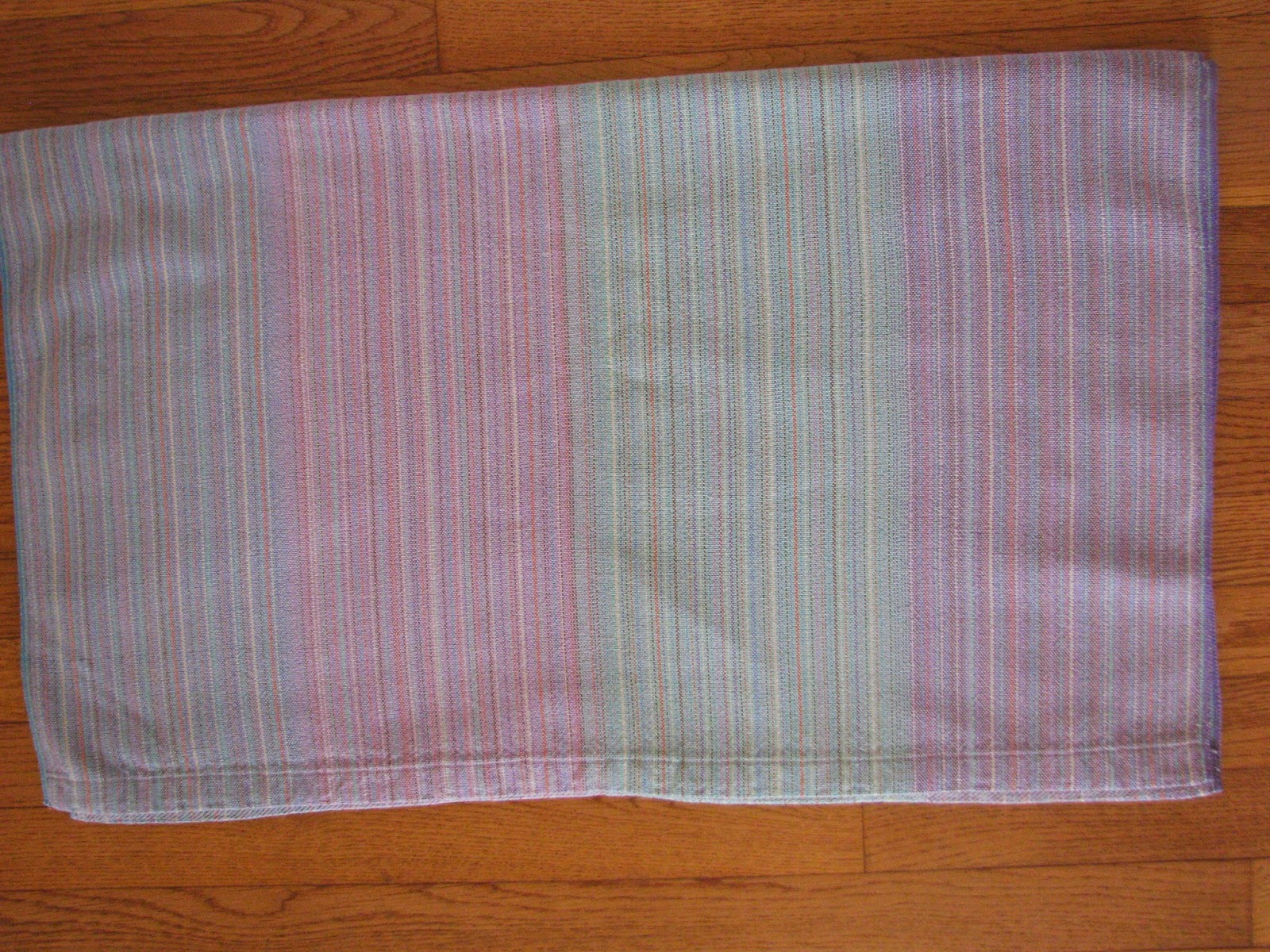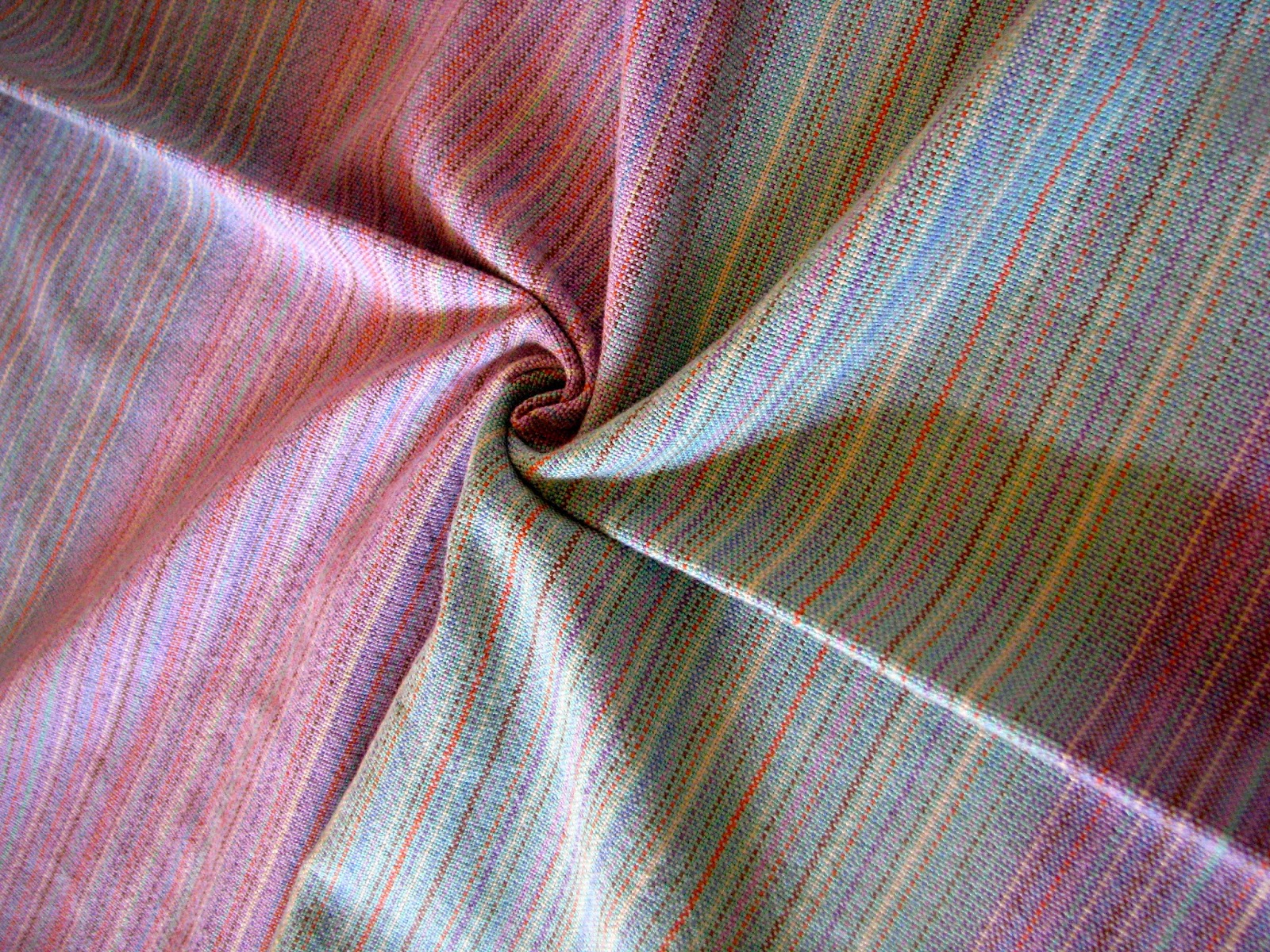 |
| Gramma's Garden |
Currently on the loom is Gramma's Garden, I love the way plain weave allows the warp colors to shine. The red/orange weft brings an unexpected warmth to the whole warp.
This custom baby wrap represents many firsts for us. Until now, Janet has designed every wrap we have made from a photo and/or working closely with our clients to develop the design. She creates a mock up by wrapping the various colors of yarn on a 1" wide piece of cardboard. She then winds the warp based on the mock up and any changes the client may have requested. Here are a couple of mock ups and final wraps.
 |
| Awakea |

 |
| Dark Shadows |
 |
| Dreamland |
 |
| Mock up for Gramma's Garden |
The design for Gramma's Garden was created by our client.
In addition, she chose a wool/tencel blend yarn for the weft. This is a departure from our usual all cotton baby wraps and has been welcome change.
The mock is the beginning and the finished wrap is the end. There are many hours of work in between. Janet winds the warps which are usually 12-14 yards long and over 800 threads. She divides the warp into 3-4 bouts or sections and winds each separately. From there, we wind the warp onto the loom and I thread it, sley the reed and weave a sample using various colors of weft for the client to choose the color they prefer. This sample is removed from the loom, measured and wet finished.
In the case of Gramma's Garden, I wove a small sample, removed it from the loom as usual and measured it carefully. I divided it into 4 separate pieces and wet finished each piece differently. Two pieces were machine washed, one in cold water and the other in warm. Both were then dried on the low setting in our dryer. They had the greatest percentage of shrinkage but it was not a huge amount.
Next, I hand washed two samples, one in cold and the other in warm and air dried both. I expected the hand dried sample that was washed in warm water to also shrink a great deal and it did not. This experiment indicates how I need to wet finish the wrap when the weaving is complete.
Once the samples are dried, tested and measured, the weaving begins. When the weaving is done and the wraps are removed from the loom we inspect them for skipped threads, small flaws, etc. Every thread, warp and weft, is carefully inspected and any small flaws (mostly skipped threads) are repaired.
The final steps are the hem the wraps and wet finish them either in the washer or by hand. We iron every wrap, inspect it again for any skips, repair the skips we missed earlier, iron again and the wrap is DONE!
Yes, it's a long process and we never tire of doing it.
Thanks for your support, thanks for reading this far into the post and have a great day!
Claudia and Janet
The Lotsaknots Team
Our Facebook page
Our Easy Shop (we have 2 wraps for sale)
Our website





















































